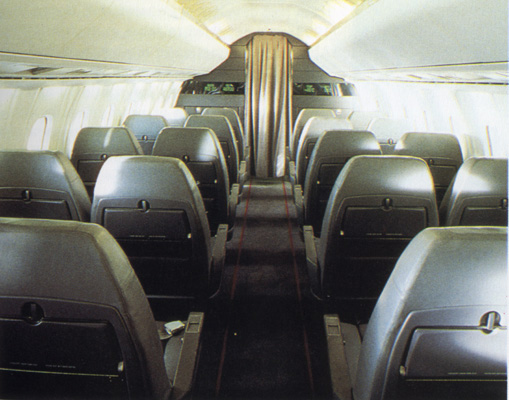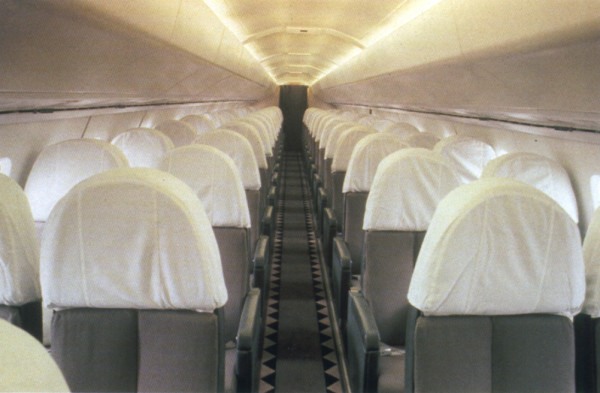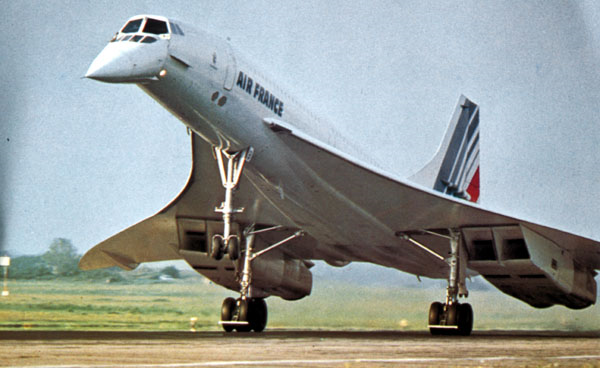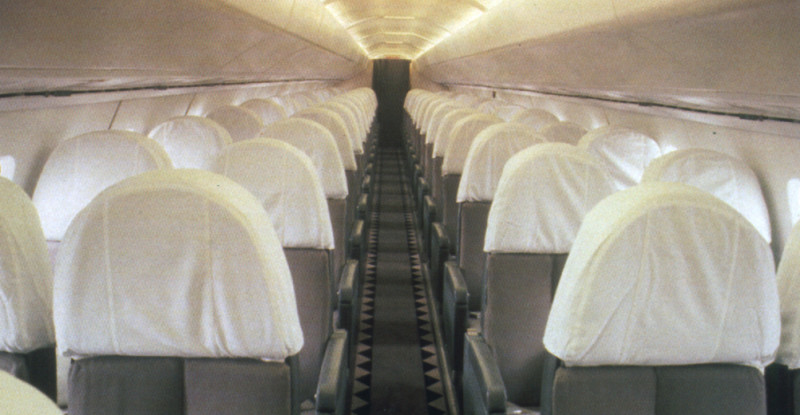During the Concorde era customers paid top dollar for the fastest form of travel in the entire history of transportation, and they felt they deserved the best possible treatment that the operating airlines could offer.
Concorde fares were generally about 20% higher than the related subsonic fares and this expenditure brought solid value to the journey. Advertisements explained how passengers achieved miraculous time-savings when flying westbound. Additionally, Concorde travel agents and passengers were provided with dedicated reservations telephone-numbers staffed by trained customer-service agents – real people, as opposed to robot-type automatic menus.
At the airports served by Concorde there were exclusive check-in, lounge and concierge facilities: employees made a point of addressing passengers by their full names – beyond the usual “Sir” and “Madame” – and VIP/CIP passengers were personally escorted to their pre-assigned seats.
In the second-generation supersonic era, given the all-powerful e-connectivity platforms now available, there will be a wealth of major new opportunities for airline managements to develop the scope and focus of the “halo-effect” that is inherent in this high-flying market segment.
Many aviation experts are forecasting that future supersonic aircraft will have relatively small-size fuselages – not greatly different from the scale of some of today’s corporate or regional jets. And the flights are predicted to be of short duration – just a few hours. So it seems likely that a number of the practical challenges associated with Concorde’s floor-plan layout might continue to exist, for example: tight configurations of aisles, galleys, lavatories, seating patterns and storage compartments.
During the approximately three and one half hours of Concorde’s transatlantic crossing, there was just enough time to enjoy a top-quality meal, skim through the international newspapers that had been provided on the jet-way side of the entry door, listen to some music on the plug-in headphones and gasp when the Machmeter displayed the magic figure of twice the speed of sound.
By contrast, second-generation supersonic cabins could offer myriad inflight entertainment and connectivity (IFEC) options. In addition to personally controlled lighting effects, there could be seat-side TV screens plus sidewall- and ceiling-panel display surfaces providing real-time entertainment, advertising and information. And via their PEDs, second-generation supersonic travelers will be able to pre-order their preferred meal choices.

British Airways Concorde Cabin Image: Jetliner Cabins
The list of superstar chefs associated with Concorde included Alain Ducasse, Anton Mosimann and the Roux Brothers: for their ultra-discerning supersonic clienteles they developed exquisite fresh- and cooked-cuisine menus that could be handled efficiently in even the most cramped galley areas. These famed culinary experts provided special training courses for Concorde flight attendants: when serving gourmet delicacies and vintage beverages to passengers, the “behind-the-scenes” know-how gave cabin staff an extra boost of confidence and panache.
Current customer satisfaction surveys show that airline passengers are yearning for air travel to become more “humanized” and “personalized”. In the next supersonic era, IFEC providers will have splendid opportunities to develop advance procedures to route personalized messages and offers of selected services to the TV screens of individual seats throughout the aircraft.
Air France and British Airways constantly upgraded their Concorde product features and customer benefits, based on programs headed by leading style gurus and renowned design houses, including: Sir Terence Conran, Christian Lacroix and Andree Putnam; Factorydesign, Landor Associates and Negus & Negus. With only one-sixth of the turbulence that was experienced on subsonic flights, and pressurized to a lower altitude than conventional jet aircraft, the Concorde cabin was a wonderfully comfortable place, where 100 passengers could relax and enjoy being part of the legendary community of the great, the good and the unusual. The front and back cabins provided seating for 40 and 60 passengers respectively. The seats were positioned two-by-two on each side of the 16-inch aisle; the seat pitch was 37/38 inches; and meals were served on drop-down seat-back tray-tables.

Air France Concorde Cabin Image: Jetliner Cabins
Second-generation supersonic passengers are likely to call for more flexibility. For example, they might well want to have pull-out or pull-up tables that could serve as both dining surfaces and e-equipped executive desks. And they would probably prefer to have revolving seats to provide a natural setting for convivial conversations. If passengers pay for two seats, could there be a convertible structure to provide a lie-flat option – similar to the current Air New Zealand sleeping-panel deployed alongside a row of three economy-class seats?
With the increasing emphasis on health and well-being, could second-generation supersonic aircraft seats be developed to include built-in exercise facilities – perhaps pedal machines? In recent years massage-control seats have achieved full safety-regulation certification status, so why not develop seats with integrated exercise machines?

Air France Concorde Image: Jetliner Cabins
On roomy subsonic aircraft airline passengers have become accustomed to lugging a huge range of carry-on bags into the cabin. But on second-generation supersonic fuselages there might not be enough ceiling space available for classic overhead baggage-storage bins. (It’s hard to remember that in the earliest days of Concorde services there were only shallow, overhead cabin-bag containers: these were designed to hold just a slim brief-case plus a bowler hat – at that time considered an absolutely necessary accessory for any businessman who wanted to be taken seriously!) Could there be a different approach to cabin baggage stowage in the second-generation supersonic aircraft? For example, how about new ways to position individual bins at the sides of seats or under the floor? Or in designated wardrobe areas?
Manufacturing forecasters state that onboard weight, and weight distribution, will be critical issues for next-generation supersonic fleets. But with all the new cabin technologies now available, including lightweight, climate-controlled, noise-reducing, anti-microbial, eco-compliant, self-cleaning, recyclable materials, the dawn of this exciting new era will offer a defining moment for ultra-modern jetliner designers to display their most imaginative and creative approaches to problem-solving.
As we all know, the history of aviation is a demonstration of the overwhelming triumph of innovation.
 About the Author
About the Author
Jennifer Coutts Clay, Principal, J. Clay Consulting, is a consultant that provides technical advice and marketing support to the aviation industry, with a focus on airliner-interior and corporate-identity programmes. Jennifer is the author of Jetliner Cabins and the third edition of her book is digitized as an APP for smartphones and tablets. She held senior positions at British Airways and Pan American. Jennifer has also worked with many organizations, including short-haul and long-haul airlines, aviation suppliers, legal firms and design specialists. At United Express, she was part of the team handling the introduction of the Canadian Regional Jet into commercial service; at South African Airways, she developed a three-class upgrade programme for the Boeing 747 fleet; and she was a certified consultant to the Port Authority of New York and New Jersey. Jennifer is a member of The Cornell Club, the Institute of Directors, The Chartered Institute of Logistics and Transport and The Wings Club (Golden Eagle Status). More information can be found on www.JetlinerCabins.com
Featured image credited to Jetliner Cabins











